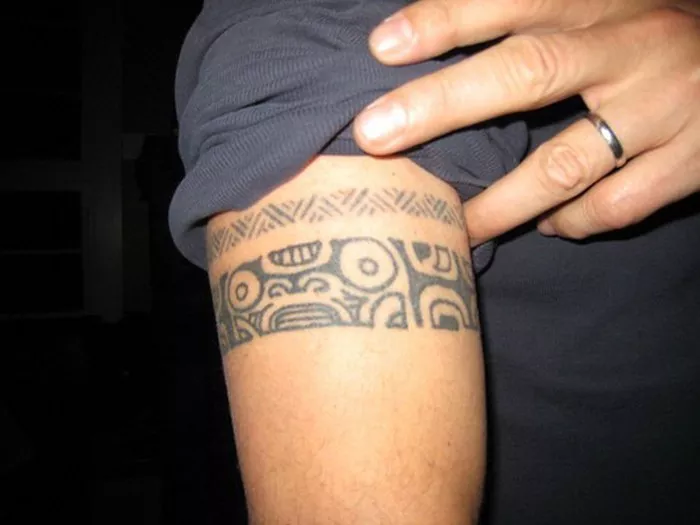Tattoos have been an integral part of human culture for millennia, with each inked design representing personal stories, beliefs, and aesthetics. However, for many prospective tattoo enthusiasts, the fear of pain can be a significant deterrent. While it’s true that getting a tattoo involves some level of discomfort, not all body areas are created equal when it comes to pain perception. Understanding which parts of the body are less painful for tattooing can help individuals make informed decisions and alleviate some anxiety associated with the process.
Understanding Tattoo Pain Perception
Before delving into specific body areas, it’s crucial to understand why tattoos hurt in the first place. Tattooing involves repeatedly puncturing the skin with a needle to deposit ink into the dermis, the second layer of skin. This process triggers the body’s pain receptors, known as nociceptors, which send signals to the brain, resulting in the sensation of pain. Factors such as the density of nerve endings, proximity to bones and organs, and individual pain tolerance all contribute to the perceived pain level during tattooing.
Factors Affecting Pain Perception
Several factors influence how much pain an individual experiences during tattooing:
1. Skin Thickness: Thicker skin areas tend to be less painful because the needle doesn’t penetrate as deeply into sensitive nerve endings.
2. Fat and Muscle Layers: Body areas with more fat or muscle cushioning may experience less pain due to the additional tissue between the skin and underlying structures.
3. Nerve Density: Areas with fewer nerve endings typically result in less pain during tattooing.
4. Proximity to Bones and Organs: Tattoos over bony areas or close to major organs may be more painful due to the lack of soft tissue cushioning.
5. Individual Pain Threshold: Each person’s pain tolerance varies, influenced by genetics, past experiences, and psychological factors.
Considering these factors can help individuals choose tattoo locations that minimize discomfort.
Least Painful Body Areas for Tattoos
While pain perception is subjective and varies from person to person, certain body areas are generally considered less painful for tattooing:
1. Upper Arm: The upper arm, particularly the outer area, is a popular choice for tattoos due to its relatively thick skin and abundant muscle tissue. The bicep region, in particular, tends to be less painful compared to other body parts.
2. Forearm: Similar to the upper arm, the forearm offers a good balance of muscle and fat, making it less sensitive to tattooing. The outer forearm is generally less painful than the inner forearm.
3. Thigh: The thigh provides ample space for large tattoo designs and is known for its relatively low pain sensitivity. The outer thigh, in particular, tends to be less painful than the inner thigh.
4. Calf: With its thick skin and substantial muscle mass, the calf is another popular choice for less painful tattooing. Tattooing the outer calf is generally more tolerable than the inner calf.
5. Shoulder: The shoulder area, including the deltoid muscle and surrounding skin, is well-suited for tattooing with minimal discomfort. The outer shoulder area is typically less painful than the collarbone or upper back.
6. Buttocks: Due to the thick layer of fat and muscle, tattooing the buttocks is often less painful compared to more sensitive areas. However, individual experiences may vary depending on the specific location on the buttocks.
7. Back: The back offers a large canvas for tattoo designs and is generally less sensitive to pain, especially the upper and outer back regions. Avoiding the spine and lower back area can further minimize discomfort.
Tips for Minimizing Tattoo Pain
While choosing less sensitive body areas can help reduce tattoo pain, several strategies can further minimize discomfort:
1. Stay Hydrated: Drink plenty of water before your tattoo session to keep your skin hydrated, which can make the process more comfortable.
2. Get Adequate Rest: Ensure you’re well-rested before getting tattooed to help manage pain more effectively.
3. Avoid Alcohol and Caffeine: Alcohol and caffeine can increase sensitivity to pain, so it’s best to avoid them before your tattoo appointment.
4. Use Numbing Creams: Topical numbing creams containing lidocaine or benzocaine can temporarily desensitize the skin, reducing pain during tattooing. However, consult with your tattoo artist before using any numbing products.
5. Practice Deep Breathing: Deep breathing techniques can help you relax and distract from the sensation of pain during the tattooing process.
6. Choose the Right Artist: Select an experienced and reputable tattoo artist who uses proper techniques and equipment to minimize pain and ensure a positive experience.
Conclusion
While getting a tattoo involves some degree of pain, choosing the right body areas and employing pain management strategies can significantly reduce discomfort. By understanding the factors that influence pain perception and exploring less sensitive body regions for tattooing, individuals can confidently embark on their tattoo journey with minimal apprehension. Remember to communicate openly with your tattoo artist about your pain tolerance and preferences to ensure a positive and comfortable experience.

